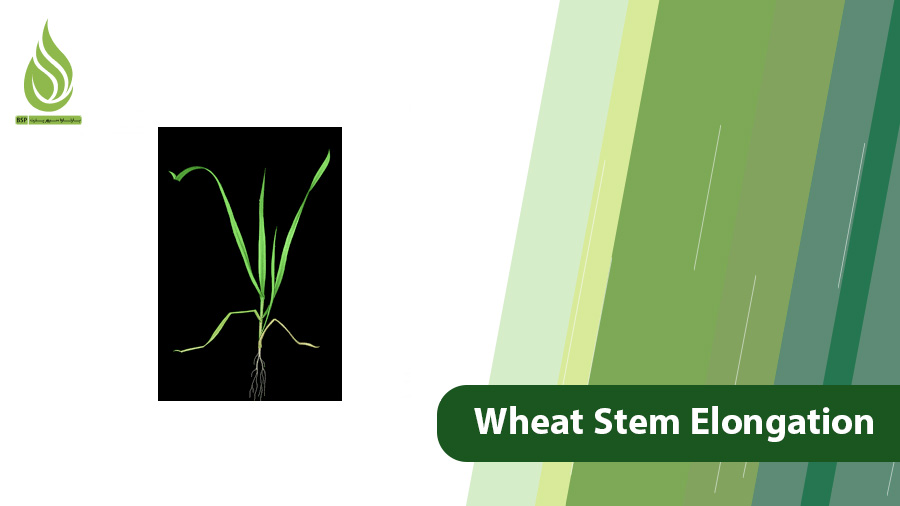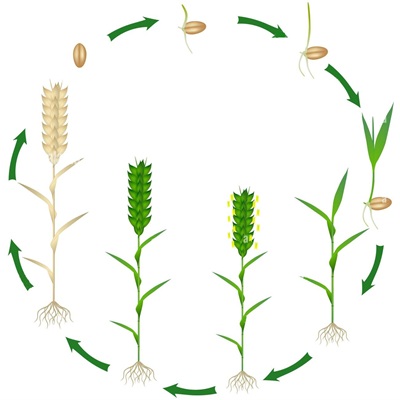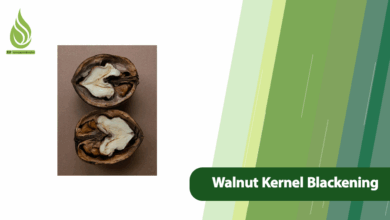
Essential Nutrients and Strategies for Wheat Stem Elongation
Wheat stem elongation is a critical phase in the growth cycle of wheat and other cereals, marking the transition from vegetative development to reproductive preparation. This stage, often referred to as jointing, sets the foundation for fertile tiller formation, spike development, and ultimately, grain production. Proper nutrition and management during wheat stem elongation can significantly boost yields, while deficiencies or mismanagement can lead to reduced grain counts, shorter spikes, and lower harvests. In this guide, we’ll explore the key aspects of wheat stem elongation, including essential nutrients, fertilizer recommendations, and best practices.
Understanding Wheat Stem Elongation: What Happens in This Crucial Stage?
Wheat stem elongation is one of the most pivotal growth phases for wheat and other cereals like barley and oats. It’s the period when the plant shifts from early vegetative growth, focused on leaf and root establishment, to preparing for reproduction. During wheat stem elongation, the plant invests energy in building stronger stems, forming fertile tillers, and initiating spike structures that will determine the final yield.
This stage typically begins at the end of tillering and extends until the first and second nodes form on the stem. Wheat stem elongation corresponds to stages 30-39, where the stem begins to elongate visibly. Let’s break down the key processes step by step.
Key Processes in Wheat Stem Elongation
- Increase in Plant Height: For wheat stems to elongate effectively, the distances between internodes (the segments between nodes) must expand. Wheat stem elongation kicks off when the first node becomes visible just above the soil surface. At this point, the primitive spike is already forming inside the stem, positioned above the last node. As the stage progresses, internodes lengthen, pushing the stem upward and carrying the developing spike along. This elongation can add several inches to the plant’s height weekly under optimal conditions. Environmental factors like temperature influence this: warmer conditions (around 68-77°F) accelerate stem growth, while cooler temperatures slow it down.
- Nutrient Transfer from Leaves to Stems and Spikes: The plant ramps up nutrient mobilization during wheat stem elongation to support future spike formation. Nutrients absorbed through roots are redistributed from leaves to emerging stems and spikes. This process is vital for building the structural integrity needed for heavy grain loads later. Deficiencies here can stunt growth, leading to fewer fertile structures.
- Initiation of Spike Differentiation: This is where the plant’s yield potential is largely decided. Tissues destined to become spikelets (small flower clusters) begin differentiating, determining the number of grains per spike. More spikelets translate to more grains and higher yields. Rapid head growth occurs alongside stem elongation, preparing florets for pollination. Genetic improvements in wheat varieties have shown potential to increase spikelet numbers by up to 20% through better nutrient management.
- Heightened Nutrient Demand: Toward the end of wheat stem elongation, the plant enters a high-growth phase with accelerated stem lengthening, fertile tiller development, and upward spike movement. This marks the peak of nutrient uptake for cereals, with demands surging by 50-70% compared to earlier stages. Ignoring this can result in weak plants prone to lodging (stem collapse) and reduced harvests.
Unfortunately, many farmers overlook the nutritional needs during wheat stem elongation, leading to suboptimal stems and fewer fertile tillers. To counter this, integrating precise management can elevate farm performance.

Essential Fertilizers for Wheat Stem Elongation
Achieving peak growth during wheat stem elongation requires targeted fertilizer applications. Key macronutrients and micronutrients also have impacts on yield. Remember, exact rates depend on soil tests, target yields, and local climate. Always consult a soil analysis before applying.
Nitrogen Fertilizers: The Backbone of Stem Growth
Nitrogen is a cornerstone nutrient in wheat stem elongation, driving stem elongation, healthy internode formation, spikelet increases, expanded leaf area, enhanced photosynthesis, and robust spike development. General recommendations call for 30-50 kg of pure nitrogen per hectare. When using ammonium sulfate, a superior nitrogen source with 21% nitrogen and added sulfur, apply 100-150 kg per hectare.
Ammonium sulfate stands out for wheat, especially in alkaline or saline soils, as it lowers soil pH and improves nutrient availability without exacerbating salinity issues. Ammonium sulfate is an excellent starter fertilizer, providing immediately available ammonium-nitrogen that boosts early stem vigor and winter wheat performance. In trials, it increased yields by 10-15% compared to urea in cold, rainy regions by reducing nitrogen loss through evaporation.
Nitrogen is the most limiting nutrient for wheat, with deficiencies slashing yields dramatically. Split applications, half at tillering and half during stem elongation, optimize uptake and prevent lodging.
Phosphorus Fertilizers: Root Strength and Tiller Retention
Phosphorus bolsters root systems and prevents fertile tiller drop-off during wheat stem elongation. If pre-plant applications were insufficient, supplement with 20-30 kg pure phosphorus per hectare, or 50-70 kg of ammonium phosphate.
Optimized phosphorus enhances stem lodging resistance under stress, improving wheat’s mechanical strength by 20-30%. Phosphorus interacts positively with nitrogen, promoting balanced growth. In phosphorus-deficient soils, yields can drop by 15-25%.
Potassium Fertilizers: Enhancing Stem Resilience
Potassium regulates water balance and fortifies stems against lodging. During wheat stem elongation, it strengthens cell walls, improves nutrient transport to spikes, and boosts drought resistance. Apply 30-50 kg pure potassium per hectare, or 50-80 kg of potassium sulfate.
Potassium alleviates ammonium stress while enhancing growth under nitrate nutrition. Balanced potassium with nitrogen can reduce lodging risks by 40%.
Micronutrients: Small Doses, Big Impacts
Though needed in trace amounts, micronutrients like zinc, manganese, copper, and iron are crucial during wheat stem elongation. Foliar apply 2 liters of complete micronutrient mix per hectare or 1 kg of zinc solution at the first node.
Foliar zinc and iron boost bioavailability in grains without yield penalties, enhancing nutritional quality. Micronutrients’ roles in photosynthesis and enzyme functions are also important. Manganese deficiencies are common in organic soils. Ag PhD recommends specific rates: 0.03 lb copper, 0.50 lb manganese, 0.26 lb zinc per acre for wheat.

Nutritional Tips for Superior Wheat Stem Elongation and Spike Preparation
To optimize wheat stem elongation, avoid common fertilizer mistakes like over-fertilization, which wastes resources and harms plant health. The time for wheat fertilization and irrigation is precisely for absorption. Pre-plant soil tests are non-negotiable; they reveal deficiencies for tailored programs applicable to wheat, barley, rice, and more.
Split nitrogen applications (2-3 times) enhance efficiency and curb lodging. In cold, wet areas, opt for ammonium sulfate over urea for minimal losses. Eradicate weeds early, as they compete for nitrogen and water, potentially halving yields. A light irrigation at the stem elongation onset aids nutrient uptake.
Foliar micronutrients shine when applied at the first node. Early tillering for potassium foliar, but stem elongation for metals like copper.
Critical Insights on Nitrogen Fertilizer Application in Wheat Stem Elongation
Given wheat stem elongation’s importance, heightened vigilance pays off in yields. Lodging plagues many farms; combat it with balanced nitrogen, potassium, and controlled watering.
Timing is everything; late nitrogen cuts tiller counts, weakens stems, shortens spikes, and reduces grains. Apply before spike emergence. Overuse promotes excessive vegetative growth and lodging, especially with ammonium sulfate if not moderated. Excessive use of ammonium sulfate harms the land and the product.
Nitrogen uptake peaks from tillering to spiking, so match applications to needs. Split dosing maximizes efficiency. In saline soils, ammonium sulfate excels by acidifying pH and mitigating alkalinity. For irrigated cereals, apply in two phases: tillering and stem elongation pre-spike. Combined applications boost yields and soil residuals.
Comprehensive Farm Management During Wheat Stem Elongation

Stem growth in cereals hinges on genetics, environment, and management. Vary practices to suit your setup for maximum elongation.
- Fertilization Timing: Apply when growth accelerates. Split into early and mid-stem elongation for best results.
- Environmental Monitoring: Track temperature, humidity, and light. Adjust for weather—warmth speeds growth, light fuels photosynthesis.
- Irrigation Optimization: Plants crave more water here; deficits cause stunted, puffy stems. Regular watering maintains moisture.
- Pest and Disease Control: Scout routinely and use preventives. 2024 Cropler data (updated 2025) flags aphids and rusts as threats.
- Variety Selection: Choose climate-suited cultivars—tall for dry areas, short for windy ones. 2025 Nature research praises resilient breeds for yield stability.
Note: Allow 4-5 weeks pre-freeze for establishment in winter wheat. Nitrogen focus for spring wheat to avoid deficiencies.
Emerging Research and Future Trends in Wheat Nutrition (2025 Updates)
2025 brings exciting advancements. ScienceDaily reports a “triple-grain” gene discovery that could triple yields by enhancing spike fertility during stem elongation. University of Hohenheim studies show that variety selection boosts nutritional density. Soil quality improvements via rotations enhance nutrient uptake. Row spacing and population for wheat success. High-yield varieties perform well under stress.
Conclusion
Mastering wheat stem elongation through balanced nutrition, especially with ammonium sulfate for reliable nitrogen and sulfur, can transform your harvests. This fertilizer supports vigorous growth in diverse soils. By integrating these strategies, farmers can achieve sustainable, high-yield outcomes. For personalized advice, conduct soil tests and consult local experts. With proper care, your wheat fields will thrive, delivering premium grains season after season.
